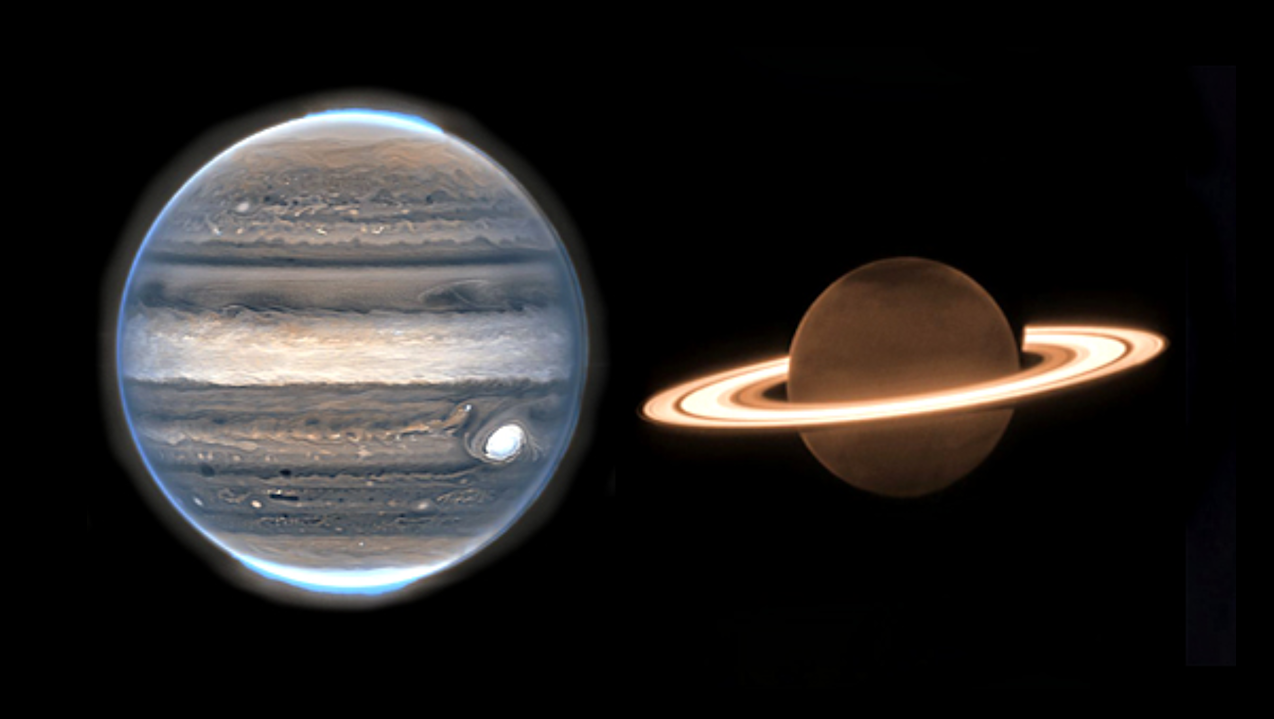Now Reading: Mars orbiters witness a ‘winter wonderland’ on the Red Planet (photos)
-
01
Mars orbiters witness a ‘winter wonderland’ on the Red Planet (photos)
Mars orbiters witness a ‘winter wonderland’ on the Red Planet (photos)
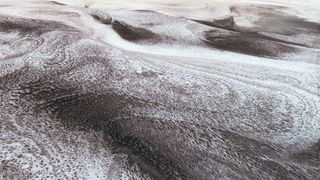
Hoping for a white Christmas this year? Well, even if there’s no snow where you live, at least you can enjoy these images of a “winter” wonderland on Mars.
Taken by the German-built High Resolution Stereo Camera (HRSC) on the European Space Agency’s (ESA) Mars Express orbiter in June 2022, and by NASA’s NASA’s Mars Reconnaissance Orbiter using its High-Resolution Imaging Science Experiment (HiRISE) camera on September 2022, these images showcase what appears to be a snowy landscape in the Australe Scopuli region of Mars, near the planet’s south pole.
But the “snow” seen here is quite different from what we have on Earth.
In fact, it’s carbon dioxide ice, and at Mars’ south pole, there’s 26-foot-thick (8-meter-thick) layer of it year-round. (These image was actually taken near the summer solstice, not the winter one — it’s very cold here all year long.)
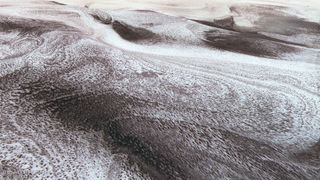
So why does it look like there’s just a dusting of “snow” in this images? Those darker areas are layers of dust that have fallen on top of the ice. The dust is typically found deep beneath the ice, but a seasonal process brings some of it to the surface.
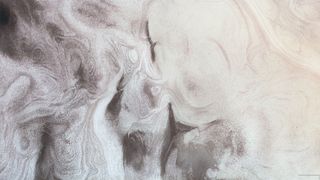
NASA’s Mars Reconnaissance Orbiter also saw winter frost lining the sides of dunes on Mars. This frost can prevent erosion, NASA writes, keeping the dust that makes up the dunes in place until the thawing season in spring.
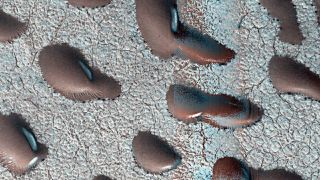
As sunlight warms the carbon dioxide ice on Mars’ south pole in the summer, the ice begins to sublimate, or turn directly from a solid into vapor. As it does so, pockets of trapped gas form within the ice.
RELATED STORIES:
Eventually, the pressure builds enough to create a little gas eruption, which is powerful enough to shoot the dark dust found beneath the ice into the air. As the dust falls back to the surface, the wind carries it into these swirling patterns. (Side note: a similar process creates the spider-like features found on the Martian surface.)
So what looks like a beautiful pastoral winter scene in these Mars Express images is actually a dynamic summer scene, where gas jets spew dust across the surface. Hey, at least it’s still cold outside — just a casual -193°F (-125°C).
Stay Informed With the Latest & Most Important News
Previous Post
Next Post
-
 012024 in Review: Highlights from NASA in Silicon Valley
012024 in Review: Highlights from NASA in Silicon Valley -
 02Panasonic Leica Summilux DG 15mm f/1.7 ASPH review
02Panasonic Leica Summilux DG 15mm f/1.7 ASPH review -
 03How New NASA, India Earth Satellite NISAR Will See Earth
03How New NASA, India Earth Satellite NISAR Will See Earth -
 04And Thus Begins A New Year For Life On Earth
04And Thus Begins A New Year For Life On Earth -
 05Astronomy Activation Ambassadors: A New Era
05Astronomy Activation Ambassadors: A New Era -
06SpaceX launch surge helps set new global launch record in 2024
-
 07Space Force plans new ‘Futures Command’ amid pressure to speed up modernization
07Space Force plans new ‘Futures Command’ amid pressure to speed up modernization















